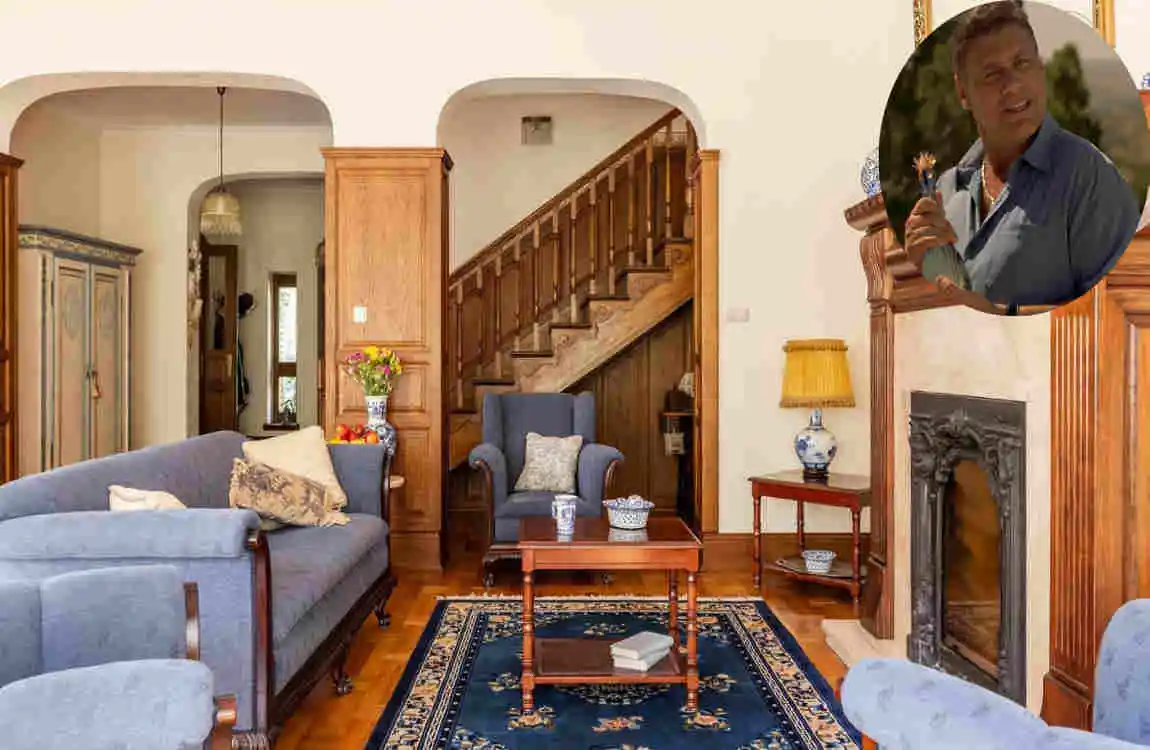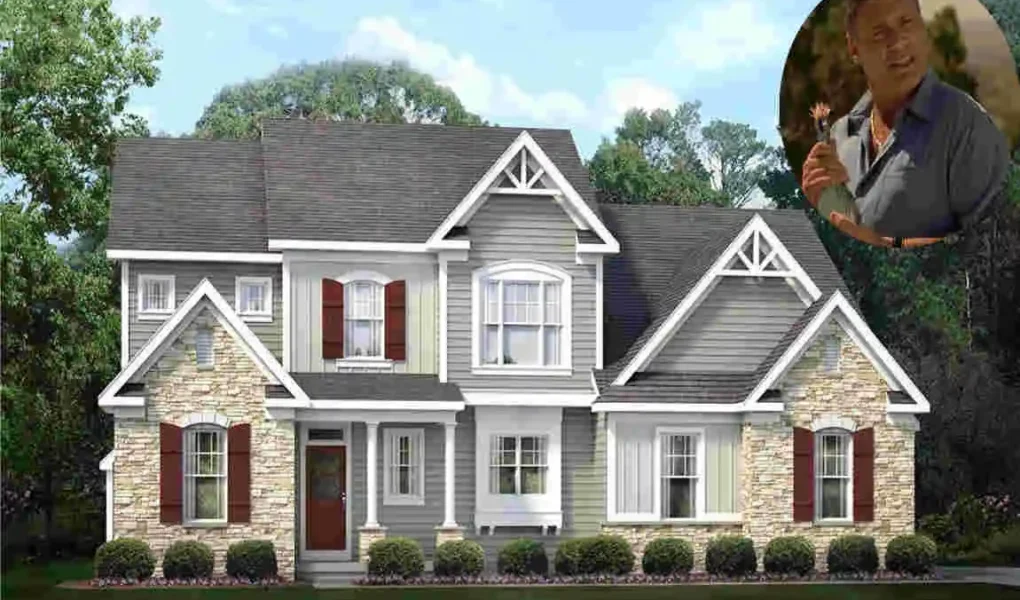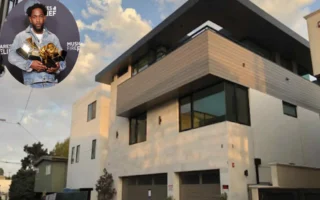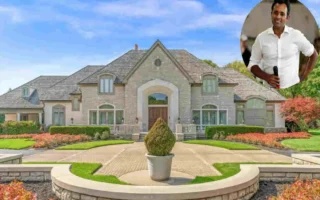When you think of Breaking Bad, what comes to mind? The intense drama? The unforgettable characters? Or the stunning locations that brought the story to life. Don Eladio’s hacienda, also known as the “Don Eladio House,” is one such location that has captured the hearts of fans worldwide. This grand mansion, with its sprawling courtyards and luxurious interiors, is more than just a backdrop for the show’s most memorable scenes. It’s a symbol of power, a testament to the cartel’s influence, and a character in its own right.
We’ll take you on a journey through the “Don Eladio modern house.” We’ll explore its architectural features, uncover the real-life inspiration behind it, and delve into its cultural significance, which has made it a beloved landmark in TV history. So, buckle up and get ready to step inside the world of Don Eladio’s iconic hacienda.
The Importance of Don Eladio in the Breaking Bad Universe
Don Eladio’s role extends beyond just being a villain. He’s a symbol of the cartel’s power and influence, a constant reminder of the dangers that lurk in the world of drug trafficking. His presence looms large over the characters, shaping their decisions and actions throughout the series.
In Better Call Saul, the prequel to Breaking Bad, we see the early days of Don Eladio’s reign. We witness his rise to power and the formation of his alliance with Gustavo Fring, another key player in the Breaking Bad universe. These scenes provide valuable context to Don Eladio’s character and his relationship with the other characters in the show.
The Connection Between Don Eladio and the Cartel’s Power Symbolized by the Hacienda
The “Don Eladio luxury House” is more than just a luxurious mansion. It’s a symbol of the cartel’s power and influence. The hacienda’s grandeur and opulence reflect the wealth and status that come with belonging to the Juárez Cartel. It’s a place where deals are made, alliances are forged, and enemies are eliminated.
The hacienda is also a testament to Don Eladio’s personal power. It’s his domain, his kingdom, where he reigns supreme. The architecture of the hacienda, with its imposing walls and secluded courtyards, reinforces this sense of power and control. It’s a place where Don Eladio can retreat from the outside world, safe in the knowledge that his enemies will never breach his defenses.
Location and Real-Life Inspiration of the Don Eladio House

The Real Filming Location of the Hacienda
The “Don Eladio House” may be a fictional home location, but a real-life hacienda inspired it in Mexico. The show’s creators chose the Hacienda Doña Concha, located in the state of Jalisco, as the filming location for Don Eladio’s mansion.
Hacienda Doña Concha is a stunning example of Colonial Mexican architecture. Built in the 18th century, the hacienda boasts sprawling courtyards, lush gardens, and elegant living quarters. It’s easy to see why the show’s creators chose this location as the backdrop for Don Eladio’s empire.
Comparing the Real Location with the Fictional Portrayal
While the Hacienda Doña Concha served as the inspiration for the “Don Eladio smart House,” the show’s creators took some creative liberties with the location. In the show, the hacienda is portrayed as even grander and more opulent than its real-life counterpart.
The show’s production team added structures and features to the hacienda, including a large pool and a grand entrance. These additions helped to reinforce the sense of power and wealth associated with the Juárez Cartel.
The Historical and Cultural Significance of the Location
The Hacienda Doña Concha is more than just a beautiful filming location. It’s a piece of Mexican history and culture. The hacienda was once a thriving agricultural estate, producing crops such as sugarcane and agave.
Today, the hacienda is a popular tourist destination, attracting visitors from around the world. It’s a testament to the enduring appeal of Mexico’s rich cultural house and the power of TV shows like Breaking Bad to shine a spotlight on lesser-known locations.
Architectural Features of Don Eladio’s Hacienda

The Design and Architecture of the Hacienda
The “Don Eladio House” is a masterpiece of Colonial Mexican architecture. The hacienda’s design is characterized by its use of local materials, such as stone and clay, and its emphasis on functionality and comfort.
The hacienda is built around a central courtyard, the heart of the estate. Living quarters, storage rooms, and other functional spaces surround this courtyard. The use of arches and columns adds a sense of grandeur and elegance to the hacienda’s design.
Key Structural Elements of the Hacienda
The “Don Eladio House” boasts several key structural elements that contribute to its overall design and functionality. These include:
- Walls: The hacienda’s walls are thick and imposing, designed to provide Security and privacy. They are made of local stone and clay, which helps to keep the interior cool in the hot Mexican climate.
- Courtyards: The hacienda’s courtyards are central to its design. They provide a space for relaxation and socializing and help circulate air throughout the estate.
- Outdoor Spaces: The hacienda features several outdoor spaces, including a large pool and lush gardens. These spaces add to the hacienda’s sense of luxury living and opulence.
- Living Quarters: The hacienda’s living quarters are designed for comfort and functionality. They are spacious and well-appointed, with high ceilings and plenty of natural light.
The Symbolism Imbued by Design Related to Cartel Power and Secrecy
The “Don Eladio House” is more than just a beautiful building. Its design is imbued with symbolism related to the power and secrecy of the Juárez Cartel.
The hacienda’s thick walls and secluded courtyards reinforce the sense of Security and privacy that come with belonging to the cartel. They create a sense of separation from the outside world, a place where the cartel can operate without fear of detection.
The hacienda’s grandeur and opulence also reflect the wealth and status associated with the cartel. It’s a place where the cartel’s leaders can retreat from the dangers of the outside world, safe in the knowledge that their enemies will never breach their defenses.
The Interiors and Settings Used for Iconic Scenes
The “Don Eladio house” is the setting for some of Breaking Bad’s most iconic scenes. The hacienda’s interiors are designed to enhance the drama and tension of these scenes.
The hacienda’s grand entrance, with its imposing columns and arched doorway, sets the stage for Gustavo Fring’s arrival and that of his associates. The spacious living quarters provide a backdrop for the tense negotiations between Fring and Don Eladio.
The hacienda’s pool is the setting for one of the show’s most memorable scenes. It’s here that Fring and his associates poison the cartel’s leaders, marking a turning point in the show’s narrative.
The Visual Appeal and How the Setting Enhances Storytelling
The “Don Eladio House” is more than just a functional space. It’s a visually stunning location that enhances the storytelling of Breaking Bad.
The hacienda’s grand architecture and lush surroundings create a sense of opulence and luxury. They reinforce the power and wealth of the Juárez Cartel, and they provide a stark contrast to the gritty world of drug trafficking.
The hacienda’s secluded courtyards and thick walls create a sense of tension and drama. They reinforce the sense of danger and secrecy that pervades the show’s narrative and provide a backdrop for some of its most intense scenes.
Iconic Scenes Filmed at the Don Eladio House

Breaking Down Key Memorable Scenes Set at the Hacienda
The “Don Eladio House” is the setting for several key scenes in Breaking Bad. These scenes are memorable not just for their dramatic tension, but also for the way they showcase the hacienda’s grandeur and opulence.
One of the most iconic scenes set at the hacienda is the poisoning of the cartel’s leaders. In this scene, Gustavo Fring and his associates arrive at the hacienda, ostensibly to negotiate a deal with Don Eladio. However, they have a secret plan to poison the cartel’s leaders, using a bottle of tequila as their weapon.
The scene is tense and dramatic, with the hacienda’s grand architecture and lush surroundings adding to the sense of danger and intrigue. The camera pans across the hacienda’s pool, where the cartel’s leaders are lounging, unaware of the risk that awaits them.
How Setting Influences Tension and Drama in Those Scenes
The “Don Eladio House” plays a crucial role in the tension and drama of these scenes. The hacienda’s grandeur and opulence convey a sense of power and wealth, juxtaposed with the gritty world of drug trafficking.
The hacienda’s secluded courtyards and thick walls reinforce the sense of danger and secrecy that pervades these scenes. They create a sense of isolation —a place where anything can happen and where the characters are cut off from the outside world.
The hacienda’s grand entrance and modern living quarters provide a backdrop for the tense negotiations between Gustavo Fring and Don Eladio. The camera pans across these spaces, capturing the scene’s tension and drama.
Quotes or Notable Moments Featuring Don Eladio and Other Characters
The “Don Eladio house” serves as the setting for several notable quotes and moments featuring Don Eladio and other characters. One of the most memorable is the scene where Don Eladio confronts Gustavo Fring, saying, “You are a brilliant man, Gustavo. But you are also a rat.”
This quote captures the scene’s tension and drama, as well as the complex relationship between Don Eladio and Gustavo Fring. It’s a moment that showcases Don Eladio’s power and authority, as well as his willingness to confront his enemies head-on.
Behind-the-Scenes Trivia or Facts About Filming at the Hacienda
The “Don Eladio unique House” was not just a beautiful location. It was also a challenging filming location, with the show’s production team facing several logistical hurdles.
One of the biggest challenges was the hacienda’s remote location. The production team had to transport all their equipment and personnel to the hacienda, located several hours from the nearest city.
Another challenge was the hacienda’s size and complexity. The production team had to carefully plan their shots and movements, taking into account the hacienda’s grand architecture and lush surroundings.
Despite these challenges, the production team captured the grandeur and opulence of the “Don Eladio house.” They used a combination of wide shots and close-ups to showcase the hacienda’s beauty, and carefully choreographed the scenes to heighten tension and drama.
The Influence of the Location on Breaking Bad’s Plot Development
The “Don Eladio House” had a home significant influence on the plot development of Breaking Bad. It was the setting for several key scenes, including the poisoning of the cartel’s leaders, which marked a turning point in the show’s narrative.
The hacienda’s grandeur and opulence reinforced the power and wealth of the Juárez Cartel. It created a sense of contrast between the cartel’s world and the gritty world of drug trafficking, and it provided a backdrop for some of the show’s most intense scenes.
The hacienda’s secluded courtyards and thick walls reinforced the sense of danger and secrecy that pervaded the show’s narrative. They created a sense of isolation —a place where anything could happen and where the characters were cut off from the outside world.
Don Eladio House in Popular Culture and Fan Tourism

How the Hacienda Became a Cultural Icon Beyond the Show
The “Don Eladio House” has become a cultural icon beyond Breaking Bad. It’s a location that has captured the hearts and imaginations of fans worldwide, a testament to the show’s enduring appeal.
The hacienda’s grandeur and opulence have made it a popular destination for fans of the show. They flock to the hacienda to see the location of some of their favorite scenes, and to experience the world of Breaking Bad firsthand.
The hacienda has also become a popular subject for fan art and merchandise. Fans create paintings, drawings, and other works inspired by the hacienda, and purchase merchandise home featuring images of the location.




